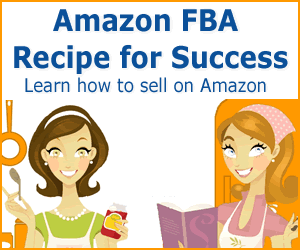Should You Be Selling on Amazon
There are clear pros and cons of selling on Amazon. The Harry Potter franchise of e-books has recognized this and will not be depending on Amazon. Author JK Rowling has teamed up with Sony to launch a direct outlet, called PotterMore.
If you’re in the ecommerce business’ and have ambition then perhaps like JK Rowling, you shouldn’t sell on Amazon. But if your ecommerce business is funding your lifestyle, and you have no great ambition to change the world, then Amazon could be an important channel for you.
This distinction is important: It’s essentially asking the age-old question about your business, “Who do you want to be when you grow up?” If your ambition is large, then Amazon is not for you. If you merely want to make enough money to pay the bills each month, then it could be good; but go into it with your eyes open because you’re hitching a ride on the back of a 90-pound gorilla.
Amazon’s strategy is to focus on three core values: selection, price and convenience. It strives to offer the widest possible selection, at the best price, with the easiest repeat shopping experience. Other merchants fit into this strategy only so far as they help Amazon to offer a wider selection of products.
Every customer on Amazon has registered; you can’t buy without first registering. It views the merchant almost as an affiliate as source of new customers based on product selection. So a search by a new visitor for a product that Amazon doesn’t sell, which results in a sale through the merchant means that Amazon has acquired a new customer. But having captured the customer, Amazon’s model is to drive to repeat sales, and it will relentlessly sell the whole range of its products, not yours.
Here are the three reasons that you should not sell on Amazon:
1. Brand
Profitability in ecommerce has its roots in repeat purchases and in selling more than one product to customers. When you sell on Amazon, you are tapping into a massive potential source of traffic, but your brand is nowhere. The traffic isn’t coming to your site. You have no opportunity to upsell the visitor that opportunity is Amazon’s.
The trust that comes from satisfying a customer need goes to Amazon, and your brand benefits hardly at all. Customers know that a purchase on Amazon will be hassle free, and if the purchase does need to be returned, Amazon’s robust customer service process will be there to help out. Even though you might be the seller of the goods, and shipping them to the customer, the customer mindshare is Amazon’s.
2. Customer relationship
Two thirds of Amazon’s orders come from repeat customers. Amazon is a master at building and maintaining customer relationships to get its customers to come back and buy Amazon products. Only when a customer is searching for a product that Amazon doesn’t stock will they find, or even consider, your offer because Amazon owns the customer relationship. You are specifically prohibited in the Amazon terms of service from contacting the customer if they were first acquired on Amazon.
If you use Fulfillment by Amazon, in which the shipping is done by Amazon, you know nothing about the customer at all. All you see is a revenue stream. They own the data and the customer relationship totally.
3. Amazon will compete with you, if you are successful
Amazon uses third party merchants to provide low volume specialty items it doesn’t want to hold in stock so that it can deliver maximum selection. But if your product line starts selling well, then you’ve just told Amazon which product it should stock next. That’s part of its strategy; merchants help Amazon to identify new niches and categories to enter which can be profitable. Every year Amazon has expanded into new categories this isn’t going to change.
Pricing
It’s also not cheap, and the pricing structure means that it will not work for low margin products. You’ll have to pay a subscription equivalent to approx $480 per year, plus per-transaction fees based on a share of your revenue. The per-transaction fee is typically a 15% referral fee which is calculated based on your selling price (excluding shipping). Fees for media products are higher with a closing fee per item as well (typically $1.35).
So in practical terms, you need to be making 40% margin on products that you consider listing on Amazon. Because of this’and its scale’if Amazon decides to stock your product category, you will not be able to compete on either price or service.
Merchants that sell through Amazon also complain that it’s very hard to kick the habit. If Amazon accounts for 50% of your business, then it is very difficult to turn off a significant revenue producing channel.
Amazon is a good strategy for some merchants. It represents 30% of the ecommerce market, so listing your product on Amazon’s marketplace will get your product in front of a huge potential volume of traffic. But you need to recognize that you are merely the supplier of the product, and while it may generate a significant revenue stream, it’s not for everyone’and it’s not building your business in a sustainable way.



